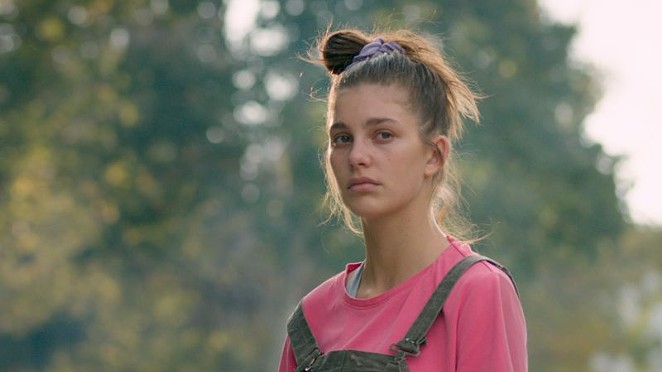Mickey and the Bear isn’t your average coming-of-age film.
While she’s navigating life in rural Montana, the teenage Mickey (Camila Morrone) also has to deal with her father, the abusive Hank (James Badge Dale), a veteran who struggles with opioid addiction. The film, set for release on Nov. 13, already has a 100% score on Rotten Tomatoes.
Mickey and the Bear was written and directed by Annabelle Attanasio, who comes from a strong acting background and used that experience for this film.
We spoke with Attanasio last week.
What was your inspiration for writing Mickey and the Bear?
Two things: first, there’s a lack of representation of father-daughter stories from the girl’s perspective. Second thing is there’s a lack of representation of veterans’ lives as they re-acclimate to society. There’s definitely a hole in the dialogue about not only PTSD but the opioid crisis in terms of the corruption of pharmaceutical companies, as well as the way the VA handles mental illness. I wanted to encompass a feminist narrative while discussing the point of larger themes that our culture is dealing with.
Did you draw on any personal experience while writing?
I was really interested in the way trauma and addiction filters into a child’s life through their parents, so I would say that kind of codependency where the adult becomes the child was something I drew from in my personal experience. But in terms of the veteran issues, that was more something I just grew interested in exploring and then dramatizing in a movie.
I think the familial crisis of how the unit is affected by these things and how it affects the person who’s suffering firsthand, but also the people around them. I think that was something I was looking to see in a movie.
Tell me about the process of writing this film.
When I started writing it, I didn’t have any intention of doing anything with it. This was not a calculated move whatsoever; it happened really organically.
I got a grant to do ethnographic and visual research on a small town in Montana when I was 21, and I fell in love with this town, which is where we shot the movie—Anaconda, Montana. The script started coming together after that, but I didn’t have any sort of formal training about writing. I just read a lot of plays. I’m an actor, so I read a lot for parts that I did, but a lot of it was me teaching myself how to write and learning, through lots of help, what I liked and didn’t like.
The final movie lacks exposition and the dialogue is laconic and biting, and for this movie, at least, that was my intention. But when I started writing, it was very expository, very emotion-driven. Then it became this thing where I was like, “Let me reveal no emotion through the dialogue.” Nobody’s saying how they really feel, and to me, that’s what life is.
What was lit like to direct for the first time?
I think directing is much more intuitive. It’s more about taste and feel and the way you can communicate your ideas to people, rather than coming in with such a strict agenda. I was definitely scared at the prospect of doing it, but I knew I could do it. And I knew that in terms of directing, there was no one better to direct it than me, because I had been with the story for so many years and I so clearly envisioned what I wanted it to be.
Since you have an acting background, how closely were you involved with casting?
I was fortunate to work with Avy Kaufman, who is a legend. I knew her from working for her when I was in college, and it was my favorite thing to be in her office. I loved her taste and creativity, and I loved being a fly on the wall and being in the audition room with her and watching her direct actors. I learned so much just through being in her presence.
Avy brought us our leads and was really supportive. Ben Rosenfield, I had collaborated with in the past and he was someone I was like, let’s just offer it to him. Whereas someone like Calvin [Demba] or Cami [Morrone], I had not heard of whatsoever and they’re both stars in the making.
Then the other side of it is, we had local casting. You’ll see in the movie, there’s a ton of Montana-based actors and some non-actors. Abby Harri and Jesy Rae Buhl were the women in charge of that. They’d run the streets and go to a lot of different towns and rodeos and car shows and casinos and all these places where people would be, and they’d scout all day. There are 30 local Montana actors or non-actors in the movie, but I think that adds to their authentic feel.
I’m interested in merging people with experience with people who are more raw. For me, there’s difference in directing a trained actor versus an untrained actor, but on both sides of the coin, there’s so much potential for real brilliance. I like to mix it up and have a collection of both.


